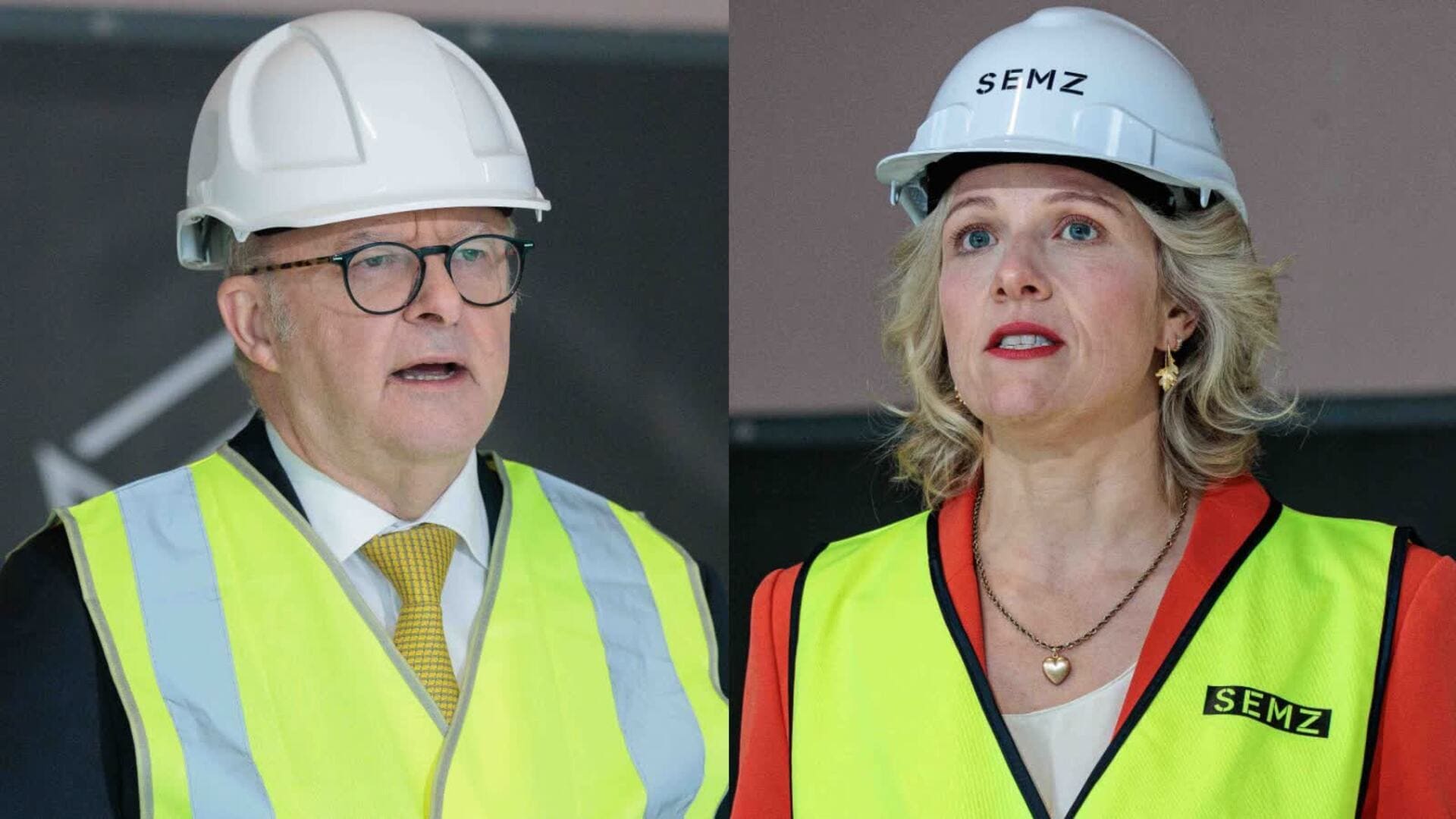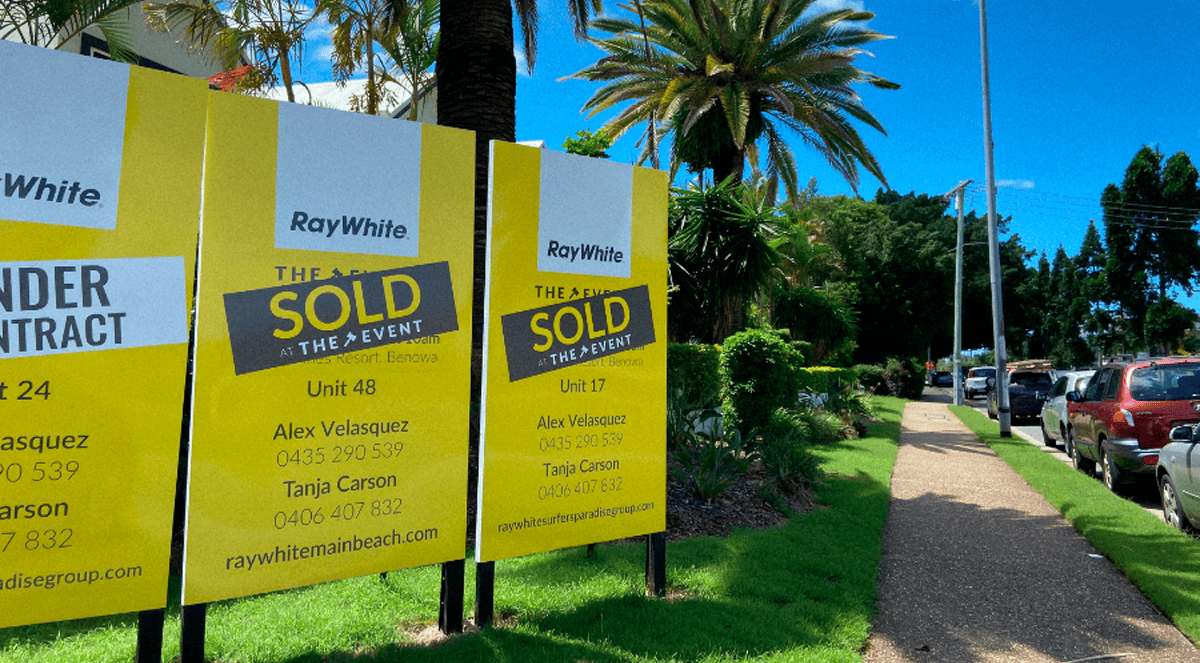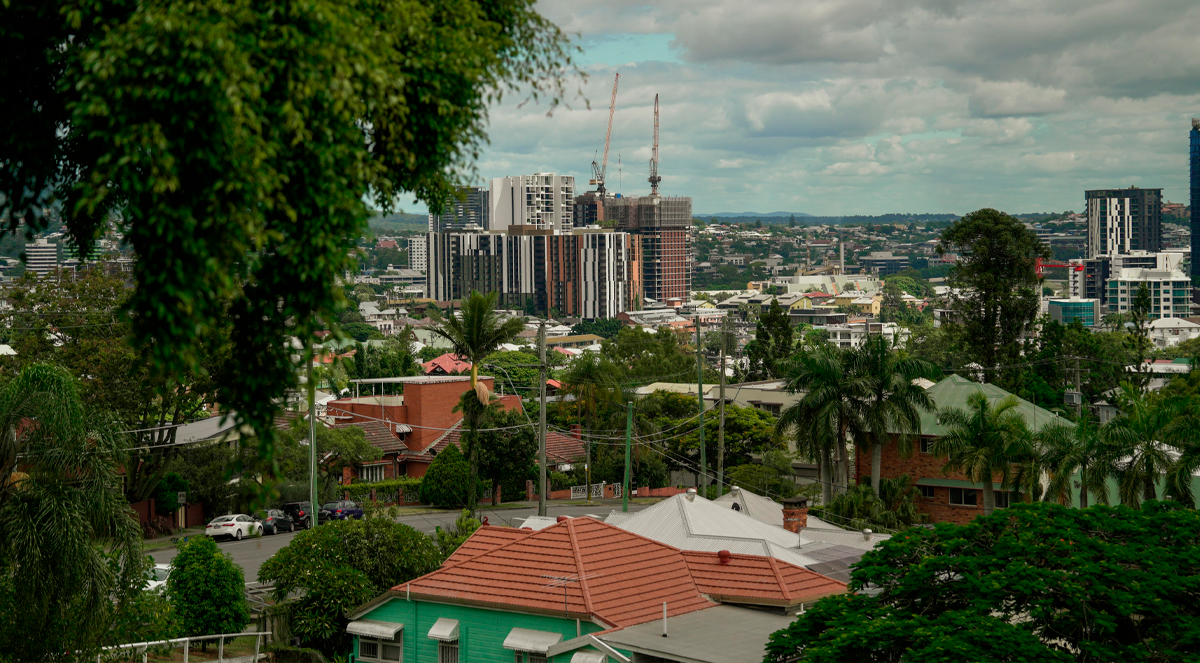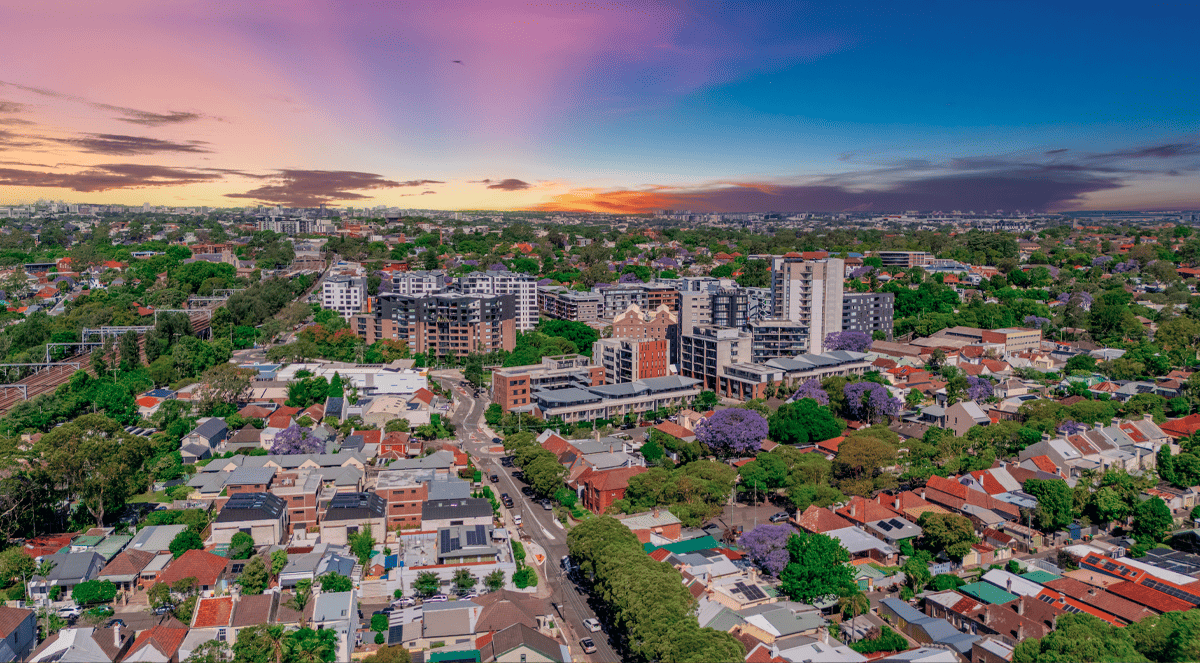Features > Property News & Insights > Market updates
Federal government moves to cut housing red tape

Image from skynews.com.au
KEY POINTS
- To boost housing supply, the Federal government will pause further National Construction Code changes and fast-track 26,000 homes stuck in environmental approvals
- Plans include encouraging super fund investment in housing, prefabricated construction, and expanding AI use in building assessments and compliance
- Industry groups like the Property Council have welcomed the changes as “sensible” and a “win” for housing supply
The Albanese government has unveiled a suite of measures to cut red tape and fast-track environmental approvals for new housing projects, as it ramps up efforts to tackle Australia’s worsening housing crisis.
The government says it will pause further residential changes to the National Construction Code and move to streamline the assessment of more than 26,000 homes currently caught up by Federal environment laws.
The announcement follows last week’s economic reform roundtable, where housing supply was a key focus.
Federal Housing Minister Clare O’Neil says the changes are designed to give the construction sector “a bit of room to breathe” while boosting the delivery of new homes.
“It’s too hard to build a home in Australia,” she says.
“It just shouldn’t take longer to get approval for a home than to build one, but often that’s exactly what happens.”
National Construction Code changes
As part of the reforms, the government says it will consult with states and territories on ways to simplify the National Construction Code, an unwieldy set of rules which has ballooned to more than 2,000 pages.
It has also flagged the potential use of artificial intelligence to make the code more accessible for tradies, small businesses, and households.
“The biggest issue we’ve got in the code at the moment is just sheer complexity,” Ms O’Neil says.
“It’s really about streamlining, about simplifying, and making sure that we provide builders the very best opportunity to build more homes more quickly.”
Changes will still be made to the code when it comes to safety, but no environmental rules will be modified for the next four years.
Environmental approvals
A new “strike team” will also be created within the Federal Environment department to speed up housing assessments, with AI again flagged as a tool to “simplify and speed up assessments and approvals.”
Environment Minister Murray Watt says the measures will cut bottlenecks without compromising environmental standards.
“Fast-tracked projects will continue to be required to meet all environmental requirements,” Mr Watt says.
Other measures

Image by Hyoung Chang/The Denver Post
Beyond the immediate cuts to red tape, the government says it will also pursue broader housing supply reforms, including removing some of the barriers to superannuation investment and encouraging greater use of modern construction methods such as prefabricated homes.
The government says the superannuation move alone has the potential to unlock 35,000 additional new homes over five years.
The opposition says it will support the changes, noting that former opposition leader Peter Dutton had taken some strikingly similar policies to the last Federal election.
Industry groups have also welcomed the announcement.
The Property Council of Australia describes the measures as a significant step forward.
Chief Executive Mike Zorbas says the reforms are “sensible” and a “win” for housing supply.
“Let’s also put AI to work turbocharging housing delivery,” Mr Zorbas says.
“A smart rollout of AI into planning and assessment systems will give decision-makers the clarity they need and save valuable time in delivering new homes.”
The reforms come as the government faces mounting pressure to meet its target of delivering 1.2 million new homes over five years, amid soaring demand and record-low housing affordability.
Reality check
While it’s great to see some national consensus about speeding up the delivery of new housing, it’s worth putting these proposed changes in context.
Australia already has an estimated current shortfall of 200,000 to 300,000 homes for our existing population, and it was revealed last week that the government’s moves to curb migration from an all-time high have largely failed.
Data released by the Australian Bureau of Statistics shows net permanent and long-term arrivals (NPLT) in the year to the 30th of June 2025 was 457,560 people, the second-highest on record.
Conservative think tank the Institute of Public Affairs says this means the federal budget’s 2024-25 forecast for net overseas migration (NOM) of 335,000 has been exceeded by 37% or 122,560 people.
While NPLT is a different measure to NOM, it’s often used as a leading indicator for net overseas migration.
Freeing up 26,000 potential homes stuck in Federal environmental approval processes is a good start, but in terms of the overall housing shortfall and the 1.2 million homes by mid-2029 target, it’s small change.
One of Australia’s leading analysts on housing policy, economist Peter Tulip, says he estimates that pruning back the red tape that surrounds residential construction would cut the cost of a new freestanding house by about $10,000.
But when the median house price in an expensive market like Sydney is already about $1.7 million, that’s an affordability gain of less than one percent.
And while tweaking the rules for big superannuation is a good idea, the bottom line is that funds will only invest in big housing projects if the trustees that control them are convinced they will produce the best returns for their members.
As for using artificial intelligence to speed up building approvals and compliance for builders - that’s a bit of a no-brainer.
All companies, institutions and government regulators should already be actively considering ways to use AI to increase productivity or make life easier for their clients.
Pre-fabricated housing may be all the rage in Nordic countries, but while it can speed up on-site construction, in Australia, its high cost remains a major barrier.
Also, the majority of people I speak to who aspire to the Great Australian Dream of owning their own home are wedded to the idea of a spacious double-brick, brick-veneer or timber home, not something that looks like it might belong in a caravan park.
The great tax burden
It’s interesting that these housing initiatives are the first tangible outcomes to be put into practice from the Federal government’s productivity summit.
But the reality is these reforms are the low-hanging fruit - they’re hard to argue against.
More substantial proposals for change were left on the table, notably winding back the extraordinary tax grab governments of all levels make on the property industry.
Earlier this year, the Housing Industry Association commissioned research which found that $576,000, or half, of the cost of a new house and land package on a greenfield site in the Sydney basin comprised government taxes, regulatory costs and charges.
That’s right, half the cost of a new home in Sydney is made up of taxes.
Don’t expect Federal, state or local governments to wind back any of that extraordinary tax grab.
And when it comes to existing homes, state governments put up extraordinary taxation barriers which prevent people from moving.
Research last year by REA Group and The e61 Institute demonstrated that the huge costs of transacting property - of which stamp duty is the largest cost - are preventing Australians from moving to locations where they could have better job opportunities, or “downsizing” to more appropriate-sized accommodation.
It’s even affecting decisions as to when couples decide to have children.
In fact, The e61 Institute’s Nick Garvin has estimated that abolishing stamp duty in just New South Wales and Victoria would see 190,000 more people move homes each year.
This would enable many older Australians in large homes to “downsize” and free up these family-sized properties - often in suburban locations close to existing schools, transport and infrastructure - for younger people who want to start a family.
Doing something tangible to reduce these extraordinarily high taxes on new and existing property would be the real game changer for housing affordability in Australia, but governments are simply not willing to confront the elephant in the room.
So, the next time you hear a minister say that “it’s too hard to build a home in Australia”, you’ll know exactly who’s to blame.
Stay Up to Date
with the Latest Australian Property News, Insights & Education.




.png?width=292&height=292&name=Copy%20Link%20(1).png)
 SIGN UP FOR FREE NEWSLETTER
SIGN UP FOR FREE NEWSLETTER





.jpg?width=1920&height=1080&name=Warning%2c%20You%20Might%20Be%20Facing%20Higher%20Taxes%20Soon%20(1).jpg)





.png?width=1920&height=1080&name=Rate%20Drops%20Signal%20BIGGEST%20Property%20Boom%20in%20DECADES%20(1).png)

.jpg?width=1920&height=1080&name=Labor%20vs%20Liberal%20These%20Housing%20Policies%20Could%20Change%20the%20Property%20Market%20Forever%20(1).jpg)
.jpg?width=1920&height=1080&name=QLD%20Slashes%20Stamp%20Duty%20Big%20News%20for%20Investors%20%26%20Home%20Buyers%20(1).jpg)
.jpg?width=1920&height=1080&name=Trump%20Just%20Slapped%20Tariffs%20%E2%80%93%20Here%E2%80%99s%20What%20It%20Means%20for%20Australia%20(1).jpg)
.jpg?width=1920&height=1080&name=Federal%20Budget%202025%20More%20Debt%2c%20No%20Housing%20%E2%80%93%20Here%E2%80%99s%20What%20You%20Need%20to%20Know%20(1).jpg)
.jpg?width=1920&height=1080&name=Australias%20Housing%20Crisis%20is%20about%20to%20get%20MUCH%20Worse%20(New%20Data%20Warns).jpg)
%20(1).jpg?width=1920&height=1080&name=Australias%20RENTAL%20CRISIS%20Hits%20ROCK%20BOTTOM!%20(2025%20Update)%20(1).jpg)
%20(1).png?width=1920&height=1080&name=Is%20Adelaide%20Still%20a%20Good%20Property%20Investment%20(2025%20UPDATE)%20(1).png)
.jpg?width=1920&height=1080&name=RBA%20Shocks%20with%20Rate%20Cuts!%20What%E2%80%99s%20Next%20for%20Property%20Investors%20(1).jpg)
%20(1).jpg?width=1920&height=1080&name=I%20Predict%20The%20Feb%20Rate%20Cut%20(My%20Price%20Growth%20Prediction)%20(1).jpg)
.png?width=1920&height=1080&name=Why%20Property%20Prices%20Will%20Rise%20in%202025%20Market%20Predictions%20(1).png)
.jpg?width=1920&height=1080&name=Why%20Investors%20Are%20Choosing%20Apartments%20Over%20Houses%202%20(1).jpg)
.jpg?width=1920&height=1080&name=Why%20Rate%20Cuts%20Will%20Trigger%20A%20Property%20Boom%20(1).jpg)
.jpg?width=1920&height=1080&name=Retire%20On%202Million%20With%20One%20Property%20(Using%20SMSF).jpg)
.jpg?width=1920&height=1080&name=4%20Reasons%20Why%20You%20Should%20Invest%20in%20Melbourne%20Now%20(1).jpg)
%20(1).jpg?width=1920&height=1080&name=Old%20Property%20vs%20New%20Property%20(Facts%20and%20Figures%20Revealed)%20(1).jpg)
%20(1).jpg?width=1920&height=1080&name=Will%20The%20New%20QLD%20Govt%20Create%20a%20Property%20Boom%20or%20Bust%20(My%20Prediction)%20(1).jpg)
%20Scott%20Kuru%20(1).jpg?width=1920&height=1080&name=Inflation%20Hits%20Three-Year%20Low%20(Will%20RBA%20Cut%20Rates%20Soon)%20Scott%20Kuru%20(1).jpg)
.jpg?width=1920&height=1080&name=How%20to%20Buy%20Investment%20Property%20Through%20SMSF_%20The%20Ultimate%20Guide%20(1).jpg)
.jpg?width=1920&height=1080&name=Victoria%20Slashes%20Stamp%20Duty%20Melbourne%20Set%20to%20Boom%20Scott%20Kuru%20(1).jpg)
.png?width=1571&height=861&name=Are%20Foreign%20Buyers%20Really%20Driving%20Up%20Australian%20Property%20Prices%20(1).png)
.jpg?width=1920&height=1080&name=The%20Single%20Factor%20That%20Predicts%20Property%20Growth%20Regions%20(1).jpg)
%20Scott%20Kuru%20(1).jpg?width=1920&height=1080&name=My%20Prediction%20On%20Rates%20%26%20Negative%20Gearing%20(Market%20Crash)%20Scott%20Kuru%20(1).jpg)

-1.png?width=1920&height=1080&name=Major%20Banks%20Cut%20Rates%20Will%20RBA%20Follow%20Suit%20(Sept%20Rate%20Update)-1.png)
%20Scott%20Kuru-1.png?width=1920&height=1080&name=Rate%20Cut%20Coming%20What%20New%20Zealands%20Move%20Means%20for%20Australia%20(Sept%20Prediction)%20Scott%20Kuru-1.png)
%20(1).jpg?width=1920&height=1080&name=Buy%20when%20the%20interest%20rates%20are%20high!%20(Why%20you%20must%20buy%20now!)%20(1).jpg)
.jpg?width=1920&height=1080&name=Carms_Revised%20Taxes%20Due%20Aug%209%20YT%20Thumbnail02%20(1).jpg)
.jpg?width=1920&height=1080&name=Carms_Too%20Little%20Too%20Late%20Aug%207%20YT%20Thumbnail01%20(1).jpg)









.jpg?width=1920&height=1080&name=Carms_Rate%20Drop%20In%20July%20Jun%2010%20YT%20Thumbnail02%20(1).jpg)
.jpg?width=1920&height=1080&name=Carms_Own%20a%20Property%20V6%20Jun%205_YT%20Thumbnail%20(1).jpg)









.png?width=1920&height=1080&name=Artboard%201%20(3).png)






.jpg?width=1920&height=1080&name=YT%20thumbnail%20%20(1).jpg)

